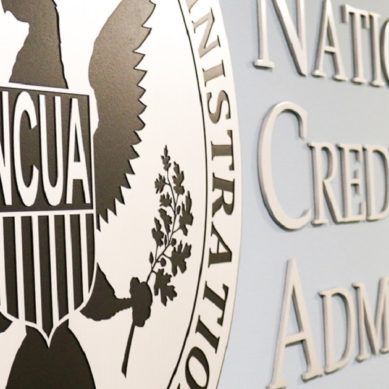I was talking with one of my clients the other day, a CEO of a credit union, and she was lamenting how her credit union website is boring. She wanted to do something different, something edgy, something so her credit union website would not look like every other credit union website.
This got me thinking, why do all credit union websites seem so similar? We launch custom websites for credit union clients nearly every month. We make each one custom to the content and branding of the client, but they do have the same bones.
Why is that? Off the top of my head, here are a couple of reasons—in no particular order—why most credit unions websites are boring, and why that is probably a good thing.
Being accessible
Accessibility continues to be a hot topic for credit unions and, really, all businesses. While it seems like the frequent lawsuits have died down, they have succeeded in bringing the accessibility issues to the forefront.
When we talk about accessibility (or A11y) with regards to your credit union website, we are talking about making sure your online services are available and understandable to the widest audience possible. This means using proper markup in your HTML so that screen readers can parse the data, making sure your color palette has enough contrast, and ensuring your images have proper alternate text to explain their use on your website—and that is just the tip of the iceberg of all the rules that could be implemented!
The World Wide Web Consortium (W3C) is the governing body overseeing all things on the web and has published a set of guidelines called the Web Content Accessibility Guidelines (WCAG) to advise website developers on what makes an accessible website.
Credit union websites built by good developers generally conform to these guidelines as much as practical (notice I said practical, not possible, but that is a whole other article) in order to serve the largest audience possible on the web. These guidelines certainly constrain and pre-define how some portions of your website will function or look. That is not to say that web developers cannot get creative within these constraints, but certainly, there is an underlying pressure that dictates how parts of your website are created.
Being accessible is a good thing. So, although it may predetermine components of your website, there is a sound reason behind it.
User experience idioms
Accessibility segues directly into user experience. Your online membership visits hundreds of websites besides your credit union website. Most websites function the same way; they have a logo and banner at the top, usually with a search bar, with consistent navigation below. The main content of the web page is the next layer down, followed by the footer content. That’s right, all websites look the same, not just credit union websites.
Website visitors are used to this format and continually seeing it works as reinforcement learning. Visitors know where to look for the content they want in the menu. They know to scroll down the page to view the content (myth of above the fold) and they know how to use the search feature. In short, your website visitors have done this before and have seen these features before. We call these “design idioms.”
So what is a design idiom? Famous idioms “it’s raining cats and dogs” and “beat around the bush” are phrases we all know the meaning of, even if the words themselves are nonsense. Design idioms function similarly. Though three horizontal lines stacked on top of one another may have no meaning, web users understand the lines to mean “menu.” These design idioms are instantly understood by the majority of users, so having these idioms in your site will make it easier for members to navigate.
This is why your credit union website should use these same design idioms. You get the advantage of reinforcement learning. Your members have learned where parts of a website are and there is no reason your credit union should not do the same. Rather than try and invent some new navigation menu scheme that will only frustrate your members, it is okay to put your website navigation where everyone expects it to be and make it behave the way everyone expects. It is okay to be boring. In fact, your members might appreciate you for it.
Search engine optimization
Search Engine Optimization (SEO) is important to some credit unions and not as important to others. If you are looking for your credit union website to show up in search results, that is what SEO is about.
The key principle of how SEO works is that your website must be a reputable source of content for the topics and keywords you want to be found by. In an absurdly simplified explanation, search engines use automated crawlers, called bots, that scan and parse your website data and prepare indexes for the search results.
This means your website content must be accessible to people with varying disabilities via the accessibility concerns mentioned previously, but now also must be digestible for these search engine crawlers. Luckily, following best practices for web development goes a long way on both these fronts. Using properly structured HTML markup is easily consumed by the bots, but this also predefines how some content is displayed.
Likewise, videos are becoming more and more popular on websites. Videos are difficult to make accessible and search engine optimized. For accessibility, your videos need to have proper subtitles for any deaf viewers. Sometimes, these subtitles also work as content for your SEO, but not always. Video content generally cannot be searched for besides the title of the video. In this case, though video is exciting, it’s also important to include the usual content in plain old text on the page.
Trust
The final topic we’ll discuss is trust. And maybe this is a rule that is made to be broken, but the common thinking is if you want your members to trust you with their finances, your website and persona should appear trustworthy. This is why bankers wear suits, why huge vault doors are visible in lobbies, and why branches are made of brick.
In today’s age, your website is often the impression a member gets of your trustworthiness. That means your website should not have broken images, broken links, or typos because that shows you do not have an attention to detail. Likewise, it probably will not look super crazy, it will look like any other trusted institution’s website, just as I described above.
In short, your credit union website is likely boring by design. Because that is the image you want to portray to your members and because that is what they expect from the entity holding all their personal information and finances. That’s not to say that some super-edgy marketing persona would not appeal to certain members, but a boring website reassuring members is almost a self-fulfilling (if unconscious) design decision.
You should not feel bad if your credit union website isn’t full of glitz and glamour. While I sympathize with the CEO who wants her credit union website to stand out from the crowd, there are many reasons to make most websites look very similar. A good web developer will help you make creative decisions that are bound by these behind-the-scenes limitations to make your website have the personality you want, while still remaining accessible and useful to your membership.


























































Jim#1
Nice article David, thank you for sharing!